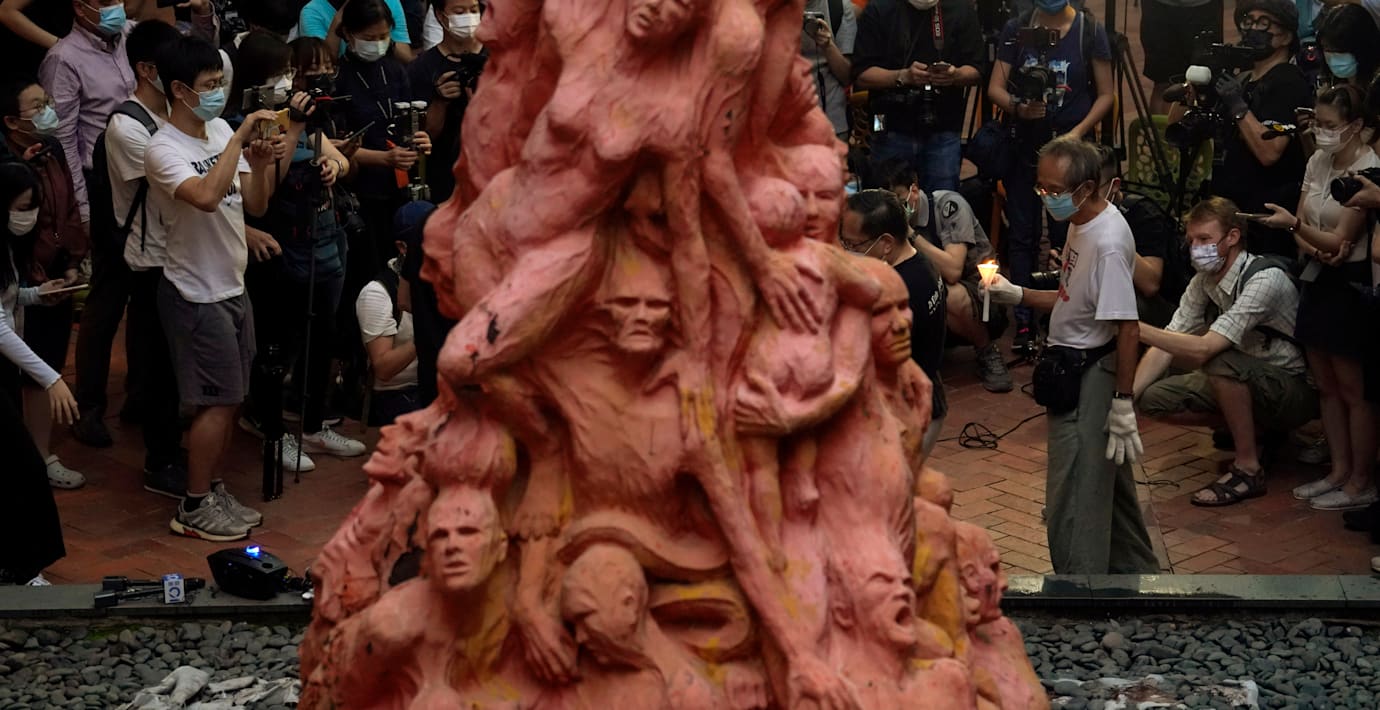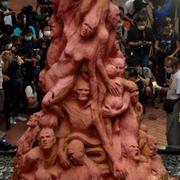
Universitet i Hongkong: Minnesstaty ska flyttas
Hongkongs äldsta universitet har beordrat att statyn som kallas ”Pillar of shame” tas bort, rapporterar AFP. Den åtta meter höga statyn, av förvridna kroppar med plågade ansikten staplade på varandra, uppfördes till minne av protesterna och massakern på kinesiska Himmelska fridens torg 1989. Den har stått på universitetsområdet i över tjugo år.
Universitetets beslut baseras på ”den senaste riskbedömning och juridisk rådgivning”.
Danske skulptören Jens Galschiot skriver i ett mejl till AFP att beslutet illustrerar Pekings pågående rensning av oliktänkande i Hongkong.
bakgrund
Pillar of Shame
Wikipedia (en)
Pillar of Shame is a series of sculptures by Danish artist Jens Galschiot. Each sculpture is an 8-metre tall statue of bronze, copper or concrete. The sculpture was inaugurated at the NGO Forum of the FAO summit in Rome in 1996. Since then three other pillars have been erected, in Hong Kong, Mexico, and Brazil. A fourth one in Berlin was planned for completion in 2002, but the plan has not come to fruition due to various issues.
bakgrund
Protesterna och massakern på Himmelska fridens torg
Wikipedia (en)
The Tiananmen Square protests, known as the June Fourth Incident (Chinese: 六四事件; pinyin: liùsì shìjiàn) in China, were student-led demonstrations held in Tiananmen Square, Beijing during 1989. In what is known as the Tiananmen Square Massacre (Chinese: 天安门大屠杀; pinyin: Tiān'ānmén dà túshā), troops armed with assault rifles and accompanied by tanks fired at the demonstrators and those trying to block the military's advance into Tiananmen Square. The protests started on April 15 and were forcibly suppressed on June 4 when the government declared martial law and sent the People's Liberation Army to occupy parts of central Beijing. Estimates of the death toll vary from several hundred to several thousand, with thousands more wounded. The popular national movement inspired by the Beijing protests is sometimes called the '89 Democracy Movement (Chinese: 八九民运; pinyin: Bājiǔ mínyùn) or the Tiananmen Square Incident (Chinese: 天安门事件; pinyin: Tiān'ānmén shìjiàn).
The protests were precipitated by the death of pro-reform Chinese Communist Party (CCP) general secretary Hu Yaobang in April 1989 amid the backdrop of rapid economic development and social change in post-Mao China, reflecting anxieties among the people and political elite about the country's future. The reforms of the 1980s had led to a nascent market economy that benefited some people but seriously disadvantaged others, and the one-party political system also faced a challenge to its legitimacy. Common grievances at the time included inflation, corruption, limited preparedness of graduates for the new economy, and restrictions on political participation. Although they were highly disorganized and their goals varied, the students called for greater accountability, constitutional due process, democracy, freedom of the press, and freedom of speech. At the height of the protests, about one million people assembled in the Square.As the protests developed, the authorities responded with both conciliatory and hardline tactics, exposing deep divisions within the party leadership. By May, a student-led hunger strike galvanized support around the country for the demonstrators, and the protests spread to some 400 cities. Among the CCP top leadership, Premier Li Peng and Party Elders Li Xiannian and Wang Zhen called for decisive action through violent suppression of the protesters, and ultimately managed to win over Paramount Leader Deng Xiaoping and President Yang Shangkun to their side. On May 20, the State Council declared martial law. They mobilized as many as 300,000 troops to Beijing. The troops advanced into central parts of Beijing on the city's major thoroughfares in the early morning hours of June 4, killing both demonstrators and bystanders in the process. The military operations were under the overall command of General Yang Baibing, half-brother of President Yang Shangkun.The international community, human rights organizations, and political analysts condemned the Chinese government for the massacre. Western countries imposed arms embargoes on China. The Chinese government made widespread arrests of protesters and their supporters, suppressed other protests around China, expelled foreign journalists, strictly controlled coverage of the events in the domestic press, strengthened the police and internal security forces, and demoted or purged officials it deemed sympathetic to the protests. More broadly, the suppression ended the political reforms begun in 1986 and halted the policies of liberalization of the 1980s, which were only partly resumed after Deng Xiaoping's Southern Tour in 1992. Considered a watershed event, reaction to the protests set limits on political expression in China, limits that have lasted up to the present day. Remembering the protests is widely associated with questioning the legitimacy of Communist Party rule and remains one of the most sensitive and most widely censored topics in China.
Omni är politiskt obundna och oberoende. Vi strävar efter att ge fler perspektiv på nyheterna. Har du frågor eller synpunkter kring vår rapportering? Kontakta redaktionen
